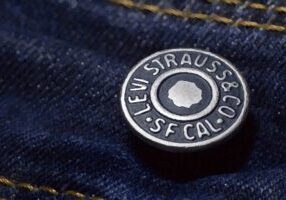
If you weren’t alive and watching the Super Bowl in 1984 between the Washington Redskins and the Los Angeles Raiders, you missed what many marketers believe to be was one of the most impactful commercials ever shown during the “Big Game.” That says a lot given the NFL’s remarkable marketing platform, an annual challenge for advertisers and brands everywhere to make their mark.
Apple’s “1984” only aired that one time in the Super Bowl, creating even more intrigue. And with no Internet or YouTube, the spot took on an incredible mystique. It was bombastic – a powerful message that the Mac could help you maintain your individuality in a world of lemmings.
Not surprisingly, there was a great deal of interpretation of the spot with much controversy about the company’s marketing strategy. Some felt the spot was brilliant, others called it crazy. And yet, it generated a dialogue and a controversy that occasionally resurfaces decades later.
Here’s the spot:
For Apple fanboys and girls, it was a sign of the company’s brashness, its creativity, its uniqueness. In those days, Apple CEO and co-founder, Steve Jobs, wasn’t just obsessed with making amazing products; his M.O. was to position his innovative company as different from every other tech company. And it was commercials like “1984” that delivered that message, adding to the company’s mystique, and creating conversation and even controversy.
The fact it was a one-and-done campaign on the world’s biggest stage – the Super Bowl – gave the spot even more cachet and enigma. And it communicated in no uncertain terms that Apple was capable of surprise, shock, and delight in both its products and its marketing – all at the same time.
You either saw it or you didn’t.
Here we are 40 years later and Apple is at it again. This time, it’s not the Macintosh, but the debut of a new ultrathin iPad.
And in a new ad that evokes controversy and even shock value, Apple is once again smashing stuff. In fact, that’s the theme of the new 2024 marketing message embodied in a TV spot named “Crush” where media and gadgets including turntables, musical instruments, books, and an arcade video game are crushed by a massive hydraulic press.
The press opens to reveal the new ultra-thin iPad Pro, essentially replacing all the “old media” in its midst. Take a look:
It evokes the “1984” breakthrough ad to some observers. But to others, it’s disturbing.
Many of the objects destroyed by the mighty Mac “crusher” are endearing to us – a piano, a record player, and even cute little animated yellow characters, sporting terrified looks as the Apple machine mercilessly pancakes them.
I’m not offended easily, but was turned off the moment I saw “Crush.” For me, it brought back my first memories of seeing the Who from their beginnings in the mid-1960s. Early on, the band often ended their shows by “spontaneously” destroying their instruments. Pete Townshend grabbed his guitar by the neck, repeatedly and violently slamming its body into the stage stage floor, while drummer Keith Moon grabbed mic stands and other objects to pulverize his drums. It was shocking, especially the first time you saw it without warning.
Interestingly, the Who was – and continues to be – one of my favorite bands of the era. While there’s no way of knowing, I’ve probably seen them live more than any other performers of that iconic time in music history. Their vivid statement about punk alienation has stuck with me forever.
At that same time, I was saving up for a Farfisa Mini-Compact Organ at a cost of several hundred dollars. Way back in the ’60s, this was a lot of dough for a kid earning $1 an hour delivering prescriptions for Band Drugs in Metro Detroit. Watching the Who crushing their perfectly wonderful instruments on stage may have made a point for them. For me, it was pointless and even a bit troubling.
Apple’s attempt at shock left me with the same empty feeling. And I found I wasn’t alone.
And yet despite its obvious effort to inspire that kind of reaction, Apple CEO, Tim Cook, was on Twitter/X reminding his legions of followers about Apple’s new and powerful tablet with the ad embedded in the tweet.

Apple has leveraged its reputation and brand essence on catering to innovators everywhere. And yet, “Crush” seemed to evoke the opposite reactions. AdAge saw it as “crushing the history of human creativity.” And the director of Handmaid’s Tale, Reed Morano suggested Cook “read the room.”
As I was putting this post together yesterday afternoon, Apple released a statement apologizing for “missing the mark,” simultaneously pulling the spot from their TV creative arsenal.
Here’s how Apple walked back “Crush” yesterday in a statement from Tor Myhren, Apple VP of marketing communications:
“Creativity is in our DNA at Apple, and it’s incredibly important to us to design products that empower creatives all over the world. Our goal is to always celebrate the myriad of ways users express themselves and bring their ideas to life through iPad. We missed the mark with this video, and we’re sorry.”
So, what can we take away from Apple’s misstep, and perhaps even apply to our own marketing and branding challenges:
1. Shock is tough to pull off – especially now – It was one thing when Howard Stern shocked us back in the ’80s. It was a different day, a different time. As Howard intuited, after years of “morning zoos,” the audience was ready to be rocked out of their daily monotony in kitchens and cars. Today, life is shocking enough as it is without Apple contributing to our angst.
2. When you screw up, suck it up, admit it, and move on – To its credit, Apple quickly realized how tone deaf “Crush” was and pulled the ad – just two days after its debut. Even Coca-Cola took more time – 77 days – to walk back New Coke. That story has become part of marketing infamy and countless PhD dissertations, something Apple desperately wishes to avoid.
3. Pre-test your creative – Here’s something interesting. “Crush” wasn’t created by an agency. Instead it was Apple’s in-house creative team. Maybe “group think” allowed a really bad idea to continue passing internal tests. In any case, $10,000 worth of focus groups would have revealed the same reaction to the spot before it embarrassed the company after it started to air. The fact Apple didn’t do these or ignored their own research is unconscionable for a company of their magnitude.
4. “Your baby’s ugly” – The entire fiasco smacks of the internal trap organizations fall into where no one has the stones to tell the boss the idea sucks. Every organization needs someone who has permission to disagree with the herd – or the boss. And by the way, when consultants are doing their jobs, this is precisely what we’re paid to do.
5. PR, buzz, and “going viral” isn’t always good – The old adage, “Any publicity is good publicity – as long as they spell your name right” is patent nonsense. For a premium brand like Apple, they’ve spent decades building their brand on supporting creatives with the sleekest, fastest, and smartest machines. “Crush” does nothing to suggest they’re living up to that reputation.
6. Everyone’s capable of a bonehead mistake – Even the slickest, smartest, and richest companies can make a bad decision, even with all the necessary safeguards in place. If you’re working for a mom & pop, a small, scrappy enterprise, or a startup, it’s comforting to know anyone can lose their mind. It’s what you do afterwards that matters.
A 6-pack of lessons from one of the biggest companies in the world is heartening in an era where many brands and leadership teams struggle to act rationally and wisely.
And it’s a reminder of how not to get “crushed” by arrogance, hubris, and bad decision-making.
Originally published by Jacobs Media






